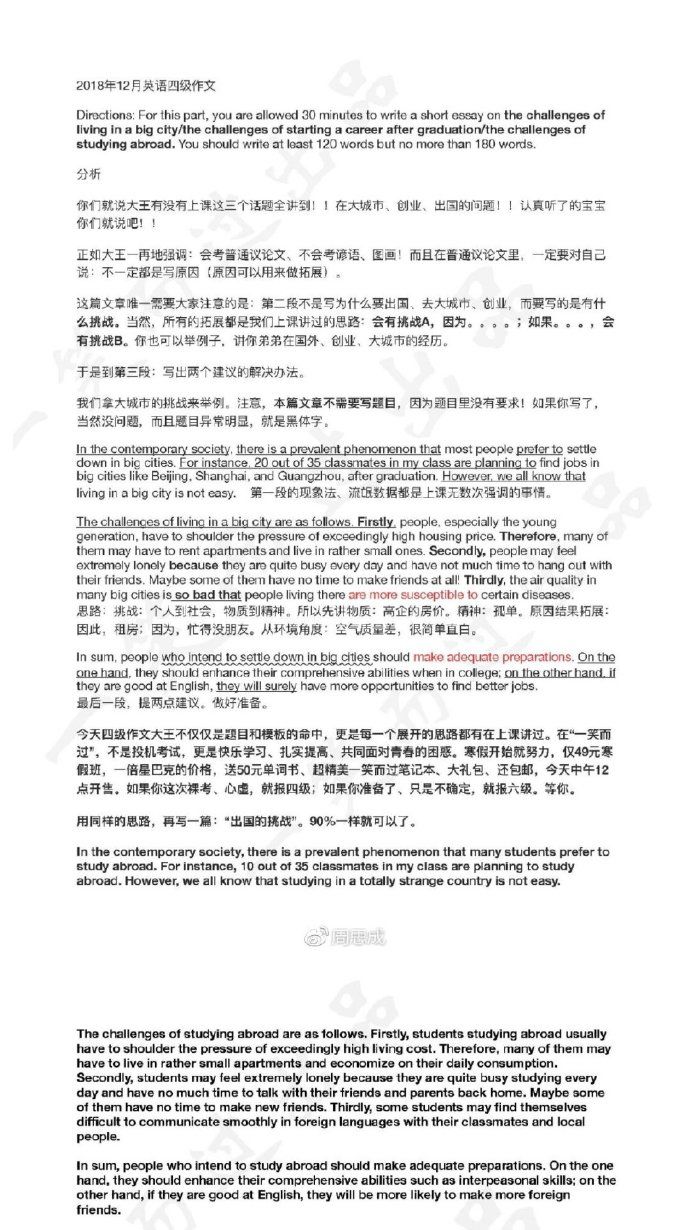美国法律体系的二元制
|
Duality in the American Legal System The American legal system features a complexity resulting from American federalism. Within the federal structure, each state retains a substantial degree of autonomy. Each has its own constitution, statutes made by its own legislature, and a body of case law created by its own courts. So it can be said that instead of one uniform set of laws America has fifty one a set of laws for each of the fifty states and one for the federation. A complication resulting from this duality, or multiplicity, is that choice of law questions frequently arise in multistate transactions or occurrences if a dis?pute arises out of a series of activities in different states, or between citizens of different states, and the substantive rights at issue are defined differently in these states, the choice of applicable law, which is governed by different choice of law rules of different states, becomes a very complicated question. The trend toward uniform statutes has tended to reduce this complication, but conflicts of law problems still exist. So, in studying American law, students should be aware that different states may have different substantive laws and dif?ferent choice of law rules regarding a particular legal situation, resulting in the possibility that the choice of forum may affect the substantive rights of the parties concerned. Choice of forum also adds to the complexity of litigation in America, because duality is also present in America's court system. Instead of one unified set of courts, America has fifty one sets, each of which operates independently of the others, and each of which is complete with its own trial and appellate courts. The state courts are the courts in which disputes are ordinarily heard. Its trial courts include courts of limited jurisdiction and courts of general jurisdic?tion1. Most states have trial courts of limited jurisdiction. These inferior courts are authorized to hear and determine cases involving a relatively small amount of money or particular subject matters. The names and authority of courts of limited jurisdiction vary from state to state. All states have courts, usually organized along county lines, for hearing cases of all types, unlimited by subject matter or amount in controversy. Such courts are referred to as the trial courts of general jurisdiction. The court of general ju?risdiction is known by different names in different states: in California it is the Superior Court; in New York, it is the Supreme Court; in many states it is the Circuit Court; in other states it is known as the District Court, the County Court, the Court of Common Pleas, and other names. Whatever its name this is the court which hears all cases that are not channeled elsewhere. Most states permit appeal of the determinations made by courts of limited ju?risdiction. In some states, a litigant dissatisfied with the result of the decision by the inferior court may request that the case be retried in the court of general juris?diction. In some states, the appeal to the court of general jurisdiction is the final appeal and in others, the decision of the court of general jurisdiction may be re?viewed by further appeal. All states permit appellate review of the decisions of courts of general juris?diction. Today, the procedure for obtaining appellate review is usually referred to as an appeal. In a few states there is but one appellate court for appeals from the trial courts of general jurisdiction. Such an appellate court is usually known as the Supreme Court of the state, but in some states it is known as the Court of Ap?peals or by some other name. In other states there are two levels of appellate courts, the intermediate appellate courts (usually known as the courts of appeals) and the supreme court. All types of appeals from the trial courts are taken to the intermediate appellate courts; further review in the state supreme court is taken only at the discretion of the supreme court or upon special request of the interme?diate appellate court. The Federal court system parallels the court systems of the states except that the federal courts are courts of limited subject matter jurisdiction2. The principal trial court of the federal system is the district court. The dis?trict courts are organized along territorial lines called districts. Each district com?prises a state or a portion of a state. The federal district courts have jurisdiction over several types of cases. A principal type includes actions between citizens of different states where the amount in controversy exceeds $ 10, 000. This is known as the "diversity juris?diction3" of the federal courts. A second principal type includes actions by individ?uals "arising under" federal law, known as the "federal question" jurisdiction of the federal courts. A third principal type of federal jurisdiction is actions by or against the Federal Government and its agencies. Determinations made in the federal district courts are ordinarily appealable to the United States Courts of Appeals, the intermediate appellate courts of the federal system. The Courts of Appeals, formerly known as the Circuit Courts, principally are organized territorially by groups of states known as circuits. There are at present thirteen Courts of Appeals, eleven bearing numbers (First Circuit, Second Circuit, etc. ) with the twelfth being the Court of Appeals for the District of Columbia and the thirteenth being the Court of Appeals for the Federal Circuit. Each Circuit Court consists of several judges who ordinarily sit in panels of three for each case4. The highest court in the federal system is of course the Supreme Court of the United States. The Supreme Court has original jurisdiction over a very limited class of cases, chiefly actions between states. Its appellate jurisdiction covers cas?es originating in the lower federal courts as well as certain types of cases originat?ing in state courts. Potentially, any case originating in a federal district court may be taken to the Supreme Court. Most of such cases must be appealed initially to the courts of appeals and may be thereafter taken to the Supreme Court at the latter's discretion. Of cases originating in state courts, only those presenting questions of federal law may be considered by the Supreme Court. 1.court of limited jurisdiction:有限管辖(权)法院 court of general jurisdiction:一般管辖(权)法院在州的司法系统中,有限管辖法院是最低级的法院,只受理小额诉讼,交通违章等。超出一定数额的诉讼,由一般管辖法院(courts of general jurisdiction)受理。所以,州的有限管辖法院也被称为低级法院(inferior courts)或低级管辖法院(courts of inferior jurisdiction)。 2.subject matter jurisdiction:对事管辖权,指法院受理某种案件的权力。有限管辖法院只能受理特定种类的案件,而一般管辖法院可受理各种案件。美国联邦宪法规定:联邦法院只能处理某些种类的案子,因此,其对事管辖权是有限的。 3.diversity jurisdiction多元管辖,联邦法院对事管辖的一种,指联邦法院对双方当事人是美国不同州的常住居民的案件的管辖权。这种案件的原告可选择联邦法院起诉,如原告不选择联邦法院起诉,被告可要求移送。 4.Each Circuit Court consists of several judges who ordinarily sit in panels of three for each case:每个巡回法院由若干法官组成,每件案件由三个法官组成的合议庭审理。"sit"在此有“成为……的成员”的意思,如:His father sits in Congress.(他父亲在国会中占有一席。) |








